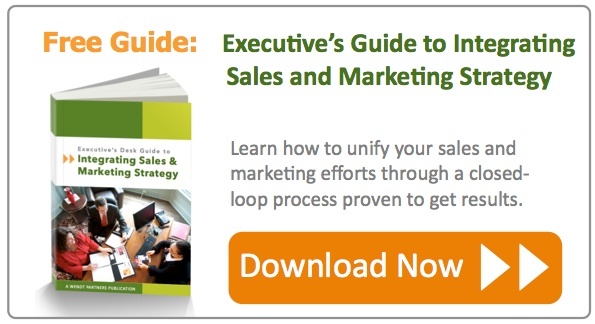Contact Data Quality: The Hidden Crisis in Your CRM System
According to industry analysis, as many as 63% of all Customer Relationship Management (CRM) system implementations fail. One reason for this is that salespeople often feel that the CRM system is being primarily installed simply to track and report on their activities, rather than being provided to offer value-added information or resources that can improve their success.
 Why CRM Systems Fail in B2B Companies
Why CRM Systems Fail in B2B Companies
Of course, this is largely true and there are a number of causal factors. One is that CRM systems have historically lived completely separate from other enterprise systems, including (most notably) marketing automation databases. Most of the leading enterprise-class marketing platforms (Marketo, Pardot and Eloqua to name a few) were developed as standalone technologies, designed to connect to but not live within sales CRM products.
Another issue is that CRM systems have historically lacked the ability to provide better information to the sales person than what the rep herself or himself would enter into the system. This further added to the sense for many salespeople that CRM was really nothing more than a ‘big brother’ reporting tool.
But even putting aside these issues, there is another even more fundamental problem with CRM systems — one that is lurking right under the surface but which can quickly turn into a full-blown crisis, even in companies where CRM adoption is high: data quality.
How Poor Data Quality Threatens Sales
Data quality is the trojan horse of CRM, in part because business leaders and software vendors fail to recognize the fundamental differences between CRM and other business systems (such as ERP applications) at their core.
The difference boils down to this: Most business applications are filled with data that is controlled by the company itself. CRM systems are filled with data that is not controlled by the company — not at all.
Adding a contact record into the company's CRM system is not the same as entering a sales order into the company’s ERP application. After all, for the sales order, we know exactly what is being ordered, how to make it, and what resources are required to deliver it. In short, we have certainty because execution of work against the data we have entered is under our control.
With a CRM system, none of that is the case. First off, the contact can change job titles, office locations, divisions/departments or entire employers or industries, and they are under no obligation to notify us. It would be the equivalent of having a customer change orders every few weeks and never think to notify you.
Then in addition, the sales cycle is not the same as the sales order. We forecast sales, but only with a rough-guess probability of close in most cases — not with anywhere near the precision we can apply to predicting when an order will be completed and ready for shipment. Again, we control most of the variables in our own production processes (barring an unforeseen disaster), but we control comparatively little of the sales process.
Losing Accuracy Means Losing Effectiveness
In summary, CRM systems track information that we don’t control, either on the data level or on the process level.
What makes this particularly ironic (and egregious) is that when companies implement enterprise applications (accounting software, inventory control systems, payroll applications, etc.), they not only train front-line employees to use it — they also generally train 1-2 key people to master it and then maintain it at all times.
In contrast, CRM systems are usually put in place with a minimum of user training, and then backed with virtually no administrative support. Only in enterprise-level companies do we traditionally see CRM systems being supported by one or more dedicated team members. And when we do see this, the position is often focused exclusively on system administration (user permissions, custom reports, screen customizations) and not on data quality.
The cold, hard fact is that up to 70% of your B2B contact database data goes stale every year. That’s like half of your customer orders changing in a year — without you being told, and without you knowing which ones were changed. Considering that your company’s business contacts are the critical keys to its business growth, it is truly essential that you get a handle on contact data quality and commit appropriate resources to it.
Here are seven steps you can take to de-escalate the contact data quality crisis lurking in your business, and help your sales team achieve sustainable success using your CRM system as the mission-critical tool it was intended to be:
1. Create and Commit to a CRM Data Quality Process
Without a process, there is no progress. In this case, you need to create a clearly defined, thoroughly documented workflow process for data quality management within your CRM system.
This process should include elements such as the required fields that must be entered when a new company or contact is created; the procedure for checking and avoiding duplicate record proliferation; naming conventions and syntax standards; and more.
2. Set Standards for Naming, Syntax and Duplicate Management
Every company needs to develop and maintain an appropriate ‘bible’ of standards for data entry, naming conventions, use of drop-down fields, filling in text and free-form fields, use of acronyms (such as “LVM” for “left voicemail”), and deciding what master company record to associate with a given contact.
This is also a time during which you can establish consistency in the CRM system based upon its search process (for example, some systems discard “the” as a prefix in company record searches, while others do not). Make sure to test each of your standards and selections to ensure that they apply effectively across the system and support, rather than complicate, user workflows.
3. Track and Manage Your Data Quality Cycle
One of the first customizations you should add to your CRM system is a “Contact Verified” field and a “Contact Verified Date” field, as well as similar counterparts for companies.
These fields should be updated every time someone goes through and performs a thorough check of records to verify and confirm both that the record is completely filled out, and that the data in the record is currently accurate.
You can then use these fields to run reports and ensure that each record is quality-checked at least four times per year (once per quarter) to ensure accuracy.
4. Establish Processes for User Updates, Job Changes and Company M&A
Some CRM systems provide you with the ability to add new people to your active user base without having to overwrite the history associated with the new user’s predecessors or coworkers, whereas others do not. You need to develop a contact assignment strategy and user update protocol that works with this, or works around the system if other limitations apply.
Contact employer and job changes present a similar challenge, as you don’t want to lose the history associated with a contact’s prior employer(s) but you do want to keep a single history of your relationship with this person, often even as they move from one employer to the next.
As companies merge, acquire or otherwise restructure or rebrand, you need to track this also and apply consistent updates across the board. If one person works for a merged division and another works for an independent subsidiary, make sure your data quality process accounts for these differences.
5. Subscribe to Third-Party Databases
Rule number one when purchasing a CRM system is that purchasing the system itself is not enough. You also need to purchase access to a database application to assist with data quality management.
Whether it’s Data.com from Salesforce, Sidekick for Business from HubSpot, Hoovers from Dun & Bradstreet, or Data Axle Genie from InfoUSA, it’s imperative that your team have access to a third-party research database.
You should also add LinkedIn Sales Navigator to your arsenal and, possibly, other tools such as Demand Base depending upon your industry.
One note of caution: These systems themselves are not necessarily filled with 100% accurate information — their primary role here is not to automate your data quality updates, but rather to provide a third-party research tool that your team can check to validate their existing research efforts.
6. Center Marketing Around Your CRM System
It’s strange, but true: Historically, marketing and sales have not shared the same database. Marketing was traditionally responsible for generating leads (website inquiries, trade show badge swipes, magazine response cards, phone calls to your toll-free number) and sales was then supposed to take these ‘leads’ and turn them into sales cycles.
It’s ironic, then, that your most potent potential source of future sales is your existing contacts, currently sitting inside the company’s CRM system. Instead of sending your latest new product announcement to a months-old (or years-old) contact list, you need to drive marketing communications from your CRM system, now that you’re committed to data quality as a strategic imperative.
Everything that marketing produces, publishes and promotes — such as your eNewsletters, webinar invitations, white paper downloads, event announcements and lead nurturing workflows - is dependent upon your CRM data quality. Centering marketing around a cleaned and maintained CRM system allows your company to stay connected with contacts in a more proactive, frequent and customized manner — all of which ultimately improves sales outcomes.
7. Dedicate Well-Trained Resources to Contact Data Quality
Whether on a full-time, part-time or contracted/outsourced basis, your sales team needs a dedicated data quality manager or sales support specialist whose job is largely dedicated to this essential ongoing function.
This person will be responsible for ensuring the accuracy and completeness of the one database most essential to the future of your business: your customer relationship management (CRM) system. Then, back those dedicated human resources up with procedures, workflows, standards and the authority to protect and enhance the quality of your CRM system across the entire front end of your business, including sales, marketing and customer service.
By creating processes, establishing standards, selecting systems and dedicating personnel to contact data quality, you will immeasurably improve your overall ability to drive revenue growth both for today, and tomorrow.
Image Credit: brungrrl (Flickr @ Creative Commons)


